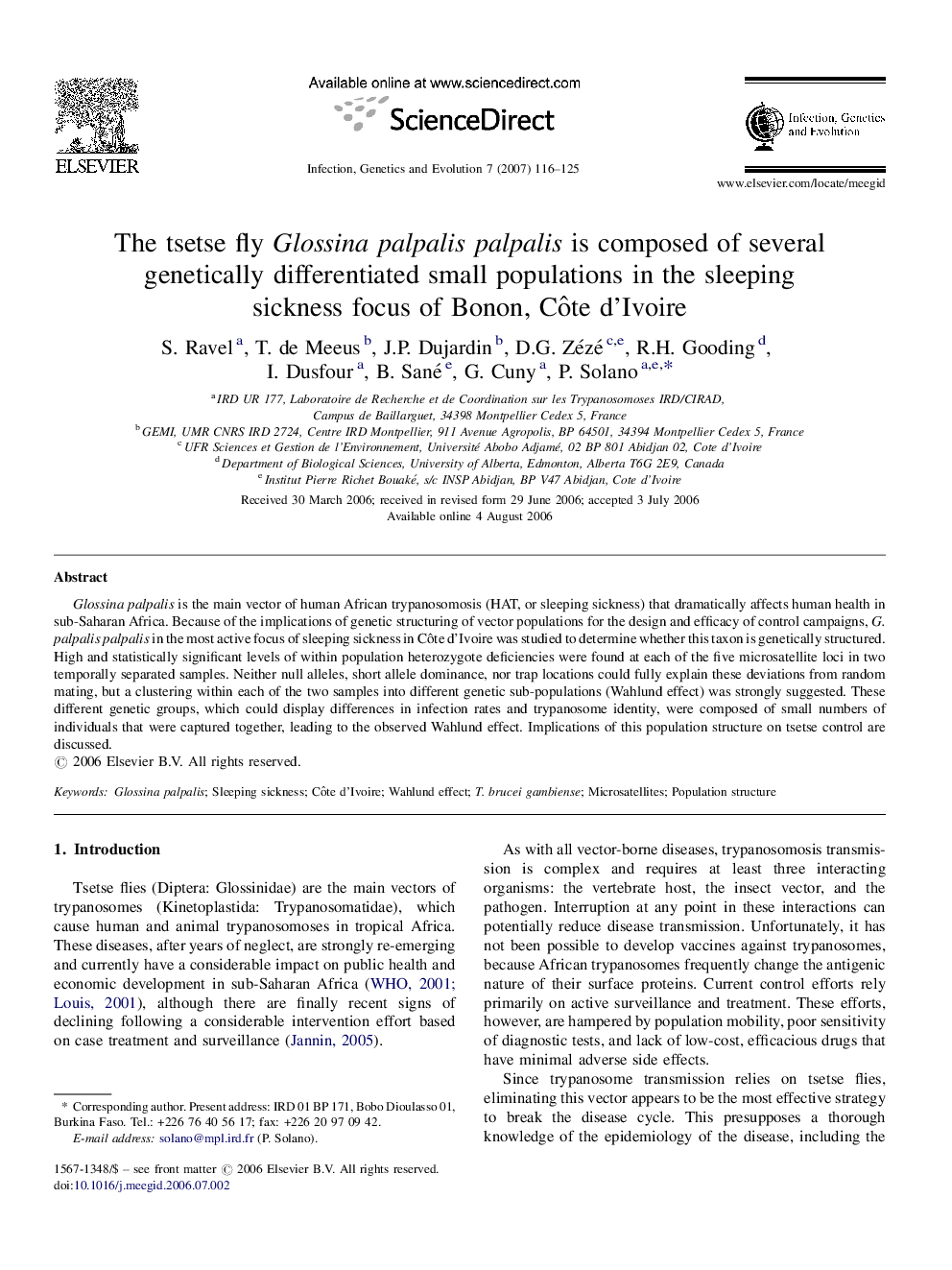| کد مقاله | کد نشریه | سال انتشار | مقاله انگلیسی | نسخه تمام متن |
|---|---|---|---|---|
| 2823683 | 1161399 | 2007 | 10 صفحه PDF | دانلود رایگان |

Glossina palpalis is the main vector of human African trypanosomosis (HAT, or sleeping sickness) that dramatically affects human health in sub-Saharan Africa. Because of the implications of genetic structuring of vector populations for the design and efficacy of control campaigns, G. palpalis palpalis in the most active focus of sleeping sickness in Côte d’Ivoire was studied to determine whether this taxon is genetically structured. High and statistically significant levels of within population heterozygote deficiencies were found at each of the five microsatellite loci in two temporally separated samples. Neither null alleles, short allele dominance, nor trap locations could fully explain these deviations from random mating, but a clustering within each of the two samples into different genetic sub-populations (Wahlund effect) was strongly suggested. These different genetic groups, which could display differences in infection rates and trypanosome identity, were composed of small numbers of individuals that were captured together, leading to the observed Wahlund effect. Implications of this population structure on tsetse control are discussed.
Journal: Infection, Genetics and Evolution - Volume 7, Issue 1, January 2007, Pages 116–125